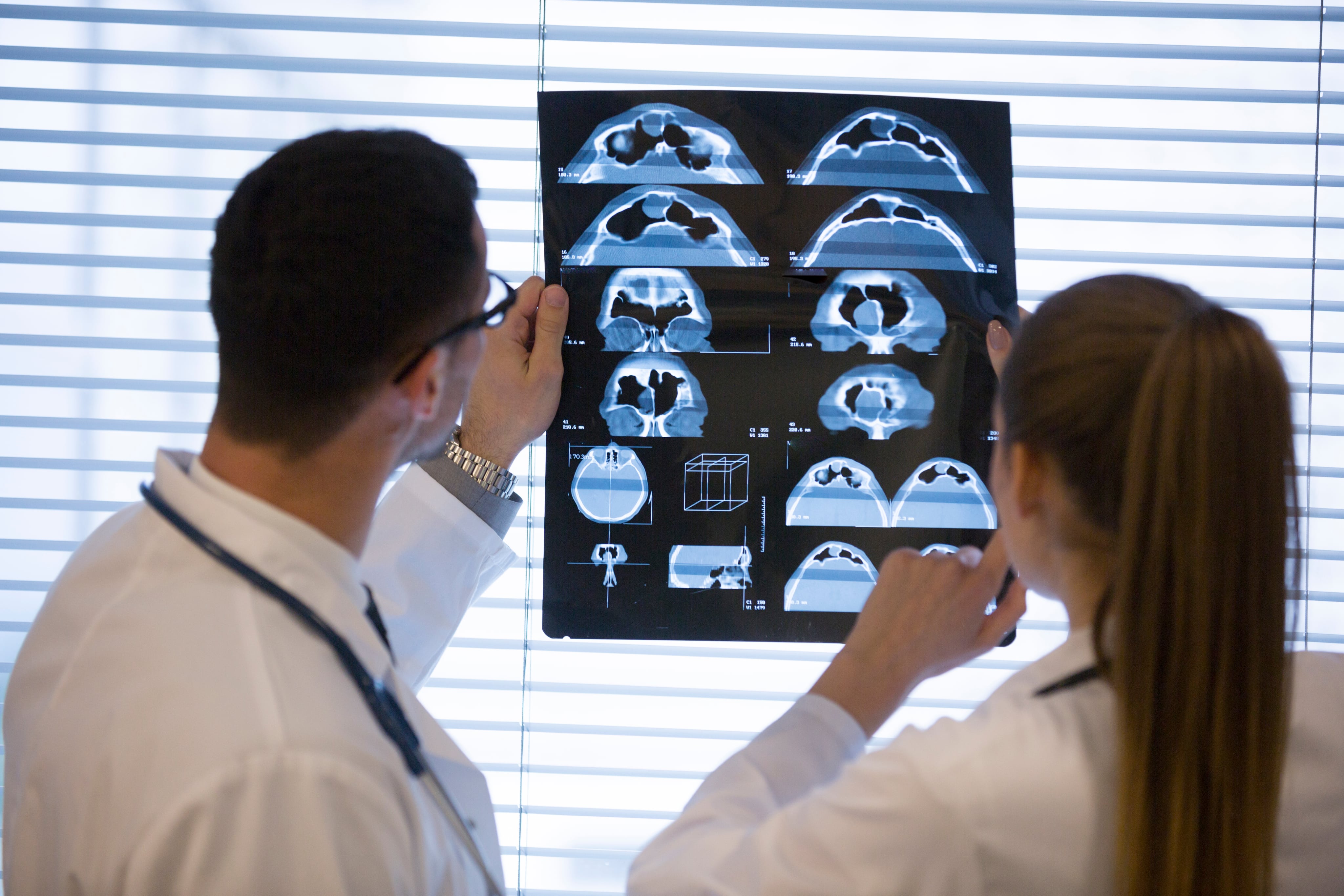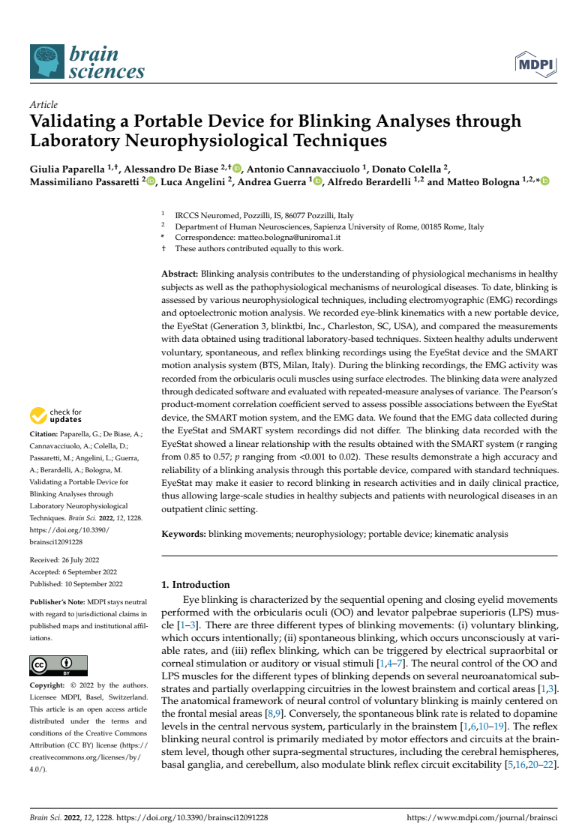Understanding the Challenges of Traumatic Brain Injury
Traumatic Brain Injury (TBI) is a brain dysfunction caused by an outside force, most commonly a blow to the head. It can range from mild (concussion) to severe, depending on the force and location of the impact. The largest cause of TBI is a traumatic event such as a road collision, with sports-related TBIs a focal and visible segment of the incidents.
While some treatment options are available to help people recover from TBI, it’s crucial to have accurate and objective traumatic brain injury testing to provide medical experts with the data they need to recommend the best course of action.
Symptoms can be subtle and easily overlooked especially in mild TBI
Delayed onset of symptoms makes diagnosis more challenging
Some diagnostic tests for traumatic brain injury may be used but cannot definitively diagnose it
For patients experiencing post-concussion syndrome, managing symptoms can involve cognitive rehabilitation and medication. Complete concussion management aims to provide a holistic approach that addresses the physical, cognitive, and emotional aspects of recovery, leading to a faster and more complete return to normal functioning. Physical therapy for concussion treatment focuses on retraining the body's systems affected by the injury, promoting healing, and ultimately helping patients regain optimal physical function and confidence in their daily lives.

The Facts
According to the Centers for Disease Control and Prevention (CDC), approximately 2.87 million TBI-related emergency department visits, hospitalizations, and deaths occurred in the United States in 2014. TBI is a significant public health concern worldwide.
Although SRC are considered the mildest form of TBI, they are the most problematic from a public health perspective due to their sheer volume and patients waiting for symptoms to resolve spontaneously and not getting treatment.
Sports-related concussions (SRC) are the most prevalent form of TBI in the military and civilian populations.
It is estimated that there are between 1.6 and 3.8 million sport-related brain injuries a year, the vast majority being concussions with the actual number likely higher due to underreporting.
Of the 1.5 million TBI occurring annually in the US, only 15% are moderate or greater, whereas 85% (~1.27 million) are mild TBI (mTBI). mTBI research in both military and athletic populations cite that those diagnosed with mTBI range from 5-6% percent in collegiate football, 8-20% in a military-related deployment, and up to 10% of adolescents who play sport.
Within the civilian population, roughly 250,000 individuals age 19 and younger visit a US emergency medical department for SRCs annually. For NCAA sports, it is estimated that there are 4.47 SRCs per 10,000 athlete exposures, including practice and competitions.
Typical recovery from post-concussion symptoms is within 4 weeks since the injury. Still, approximately 30% of athletes experience persistent post-concussion symptoms (PPCS) for far longer, which is associated with poor academic and work performance and mood disorders.
TBI imposes a significant economic burden on individuals, families, and society as a whole. The lifetime costs associated with TBI-related medical care and lost productivity are estimated to be in the billions of dollars annually in the United States alone.
The updated VA/DoD CLINICAL PRACTICE GUIDELINE FOR THE MANAGEMENT OF CONCUSSION-MILD TRAUMATIC BRAIN INJURY states "Conceptually, a confirmatory objective test that .... could be used to direct treatment and/or predict outcomes would be desirable" This is very important in forward areas that need to make rapid triage/evacuation decisions.
From the Consensus statement on concussion in sport: the 6th International Conference on Concussion in Sport–Amsterdam, October 2022: In the research setting, the employment of modalities assessing autonomic dysfunction show promising sensitivity to acute neurobiological effects and changes over the course of SRC recovery.
Obstacles to consistent care involve delay in initial treatment, lack of follow-up, and access to care. The main predictor for delayed recovery, out of all clinical measures of concussion, is time to initial assessment. The research also identifies the effect of insufficiencies in post-concussion care, citing that of those who experience persisting symptoms, only 1/5th of individuals with such symptoms receive outpatient rehabilitation. Finally, there are several causes for delays, such as access to health care and the urgency of the patient, which are amplified in rural and underserved areas.
The Facts
44%
of subjects do not receive follow up within 3 months
4.17
TBIs per 10k high school athlete exposure / 4.47 per 10k collegiate
2.87
million TBIs in USA per year
150
million TBIs per year (81% are TBI)
2.5
million TBIs in Europe per year
The Blink Research
Blinkcns was established in 2017 to develop a rapid and quantitative method for utilizing a person’s eye blink and blink reflex for the assessment of concussion/traumatic brain injury (TBI), based on research conducted at the MUSC (Medical University of South Carolina). Our EyeStat 3 device was developed, and subsequently FDA 510K cleared, to provide this capability.
Our foundational research supports EyeStat's initial application intended to promptly and objectively test for and identify abnormal blink patterns associated with traumatic brain injury.
>4,600
baseline scans obtained
4 -76
age range of subjects scanned
150
experienced concussions
97.01%
sensitivity of scans
TBI Markets
Emergency Services
Military
Construction
International
Collegiate & Professional Athletics
Kindergarten → High School
Youth Sports

Validating a Portable Device for Blinking Analyses through Laboratory Neurophysiological Techniques

Pre-to-Post Season Reliability of Blink Reflex Parameters in Non-Concussed Athletes

Changes in Blink Reflex After Sport-Related Concussion and its Association with Symptom Cluster










